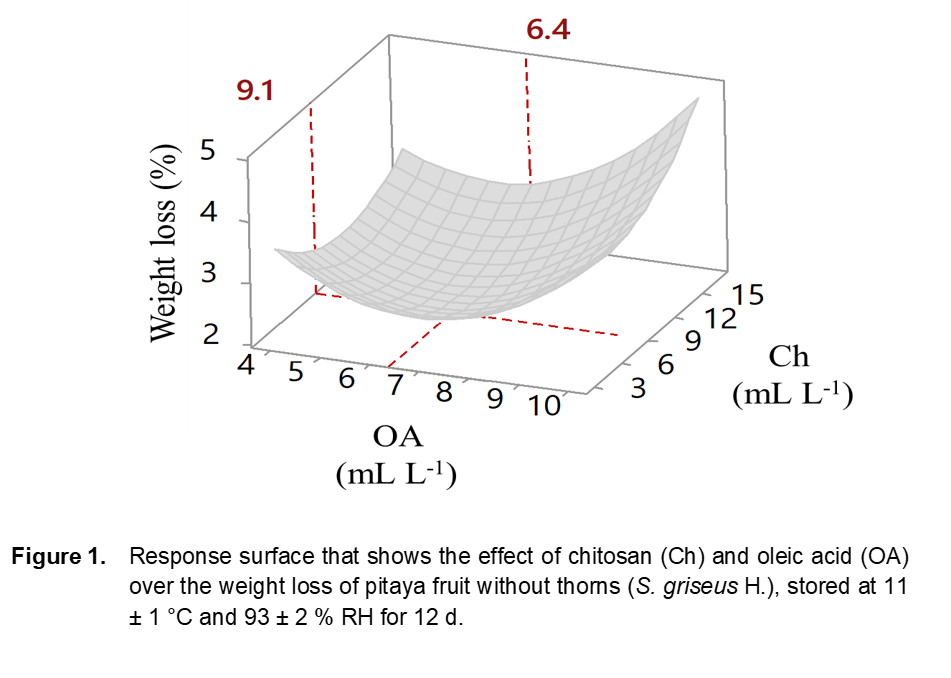Postharvest effects of 1-MCP and Chitosan/Oleic acid coating in Pitaya (Stenocereus griseus H.)
DOI:
https://doi.org/10.56890/jpacd.v23i.322Keywords:
Stenocereus griseus, shelf-life, quality parameters, respiration, ethylene.Abstract
Pitaya (Stenocereus griseus H.) is an exotic fruit produced in some regions of Mexico, where it is mainly consumed fresh and valued in local markets. Its pulp has an intense red color, sweet flavor, small and easily chewable seeds, and compounds with antioxidant capacity, such as betalains and phenolics, which confer the fruit an important nutraceutical value. Therefore, in selected markets, the price of pitaya is considered high. However, pitaya has big spines that cause consumer rejection, due to the possibility of puncture. The spines also make it difficult to handle pitaya and cause mechanical damages. These circumstances make it indispensable to remove the spines from the fruit, but collaterally, the shelf-life is decreased, and consequently, its commercialization in distant markets is more difficult. It has been reported that postharvest treatments, such as application of 1-methylcyclopropene (1-MCP) and chitosan (Ch) coatings added with hydrophobic components like oleic acid (OA), aid in preserving the quality of several horticultural products, but this effect has not been studied in pitaya. In the present study, the effects of 1-MCP (4.2 µL L-1) and/or a coating prepared with 9.1 g L-1 of Ch + 6.4 mL L-1 of OA (CO) were evaluated over the quality of pitayas, which were previously despined (D) during refrigeration (11 ± 1 °C; 93 ± 2 % relative humidity (RH)) for 15 d. The quality parameters studied were respiration pattern, ethylene production, weight loss, titratable acidity, skin firmness, and total soluble solids (TSS). It was found that the respiration rate and ethylene production corresponded to the climacteric type, independently of the treatment.
The refrigeration conditions, minimized notoriously the weight loss of the fruits of practically all treatments. CO alone maintained the quality parameters and delayed the appearance of fungi, extending the shelf-life of despined pitayas up to 15 d. However, 1-MCP alone was not capable of preserving the evaluated quality parameters. The best treatment was D+CO+1-MCP, since it reduced notoriously the respiration and ethylene production rates, and inhibited loss of skin firmness, TSS, and acidity of the fruit. The results obtained herein are a progress in the limited knowledge of the postharvest physiology of pitaya fruit. More research is needed to deepen this knowledge and to optimize the postharvest handling of pitaya, in order to develop its market at global level for the benefit of producers and consumers.
Publication Facts
Reviewer profiles N/A
Author statements
Indexed in
- Academic society
- Journal of the Professional Association for Cactus Development
- Publisher
- Professional Association for Cactus Development




